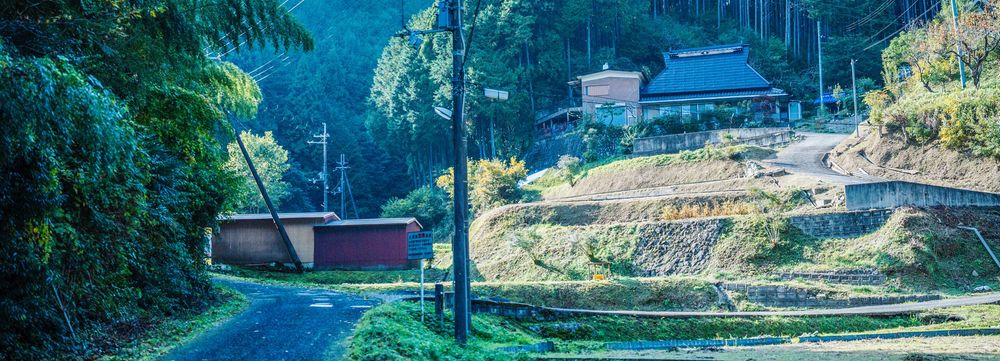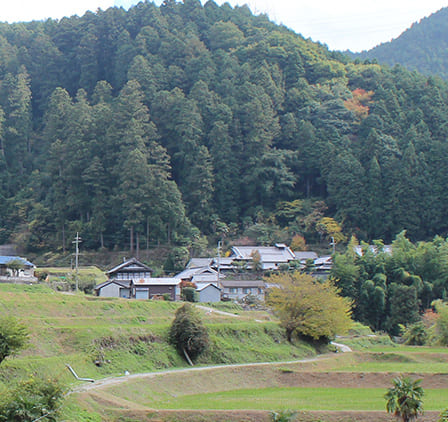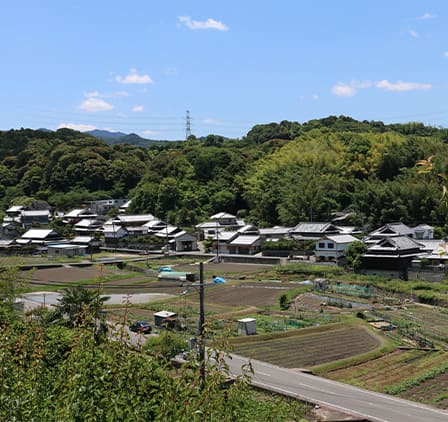
Traces of Medieval Landscapes in Modern Kawachinagano
Kawachinagano City is a region rich in natural beauty, with approximately 70% of its land covered by forests and surrounded by mountains. Settlements are nestled along rivers such as the Ishikawa River and Ishimigawa River, which flow through the valleys.
The Kawakami Valley, home to Kanshinji Temple, and the Amano Valley, where Kongoji Temple stands, preserve elements of medieval landscapes. These areas feature terraced rice fields, shrines dedicated to deities safeguarding local communities, and traditional Japanese houses, all centered around historic temples.
This enduring scenery reflects a historical practice in which influential local farmers donated land, including crop fields, to temples when their children joined monastic life. Temples thus became the central hubs of the regional economy and community.
Additionally, Kawachinagano has worked to protect and pass down its abundant natural heritage. Four areas in the city have been designated as Furusato Cultural Properties Forest. These forests provide materials such as timber, Hinoki bark, thatch, and lacquer, essential for restoring traditional Japanese architecture and cultural assets.
This enduring scenery reflects a historical practice in which influential local farmers donated land, including crop fields, to temples when their children joined monastic life. Temples thus became the central hubs of the regional economy and community.
Additionally, Kawachinagano has worked to protect and pass down its abundant natural heritage. Four areas in the city have been designated as Furusato Cultural Properties Forest. These forests provide materials such as timber, Hinoki bark, thatch, and lacquer, essential for restoring traditional Japanese architecture and cultural assets.

Timeless Landscape (Kawakami District)
The settlement in Kawakami Valley, where Kanshinji Temple is located, was historically part of the temple’s estate. Human activity in this valley is believed to have thrived as early as the 12th–13th centuries. With limited flat land along the valley floor, the settlement was established on the upper ridges, while the slopes below were transformed into terraced rice fields.

Timeless Landscapes (Amano District)
In Amano Valley, an irrigation system was developed to channel water from the Amano River, starting near Kongoji Temple in the upper reaches of the valley. This system enabled the cultivation of rice paddies further downstream. The valley's gently sloping terrain, with a width of up to 300 meters, has been utilized for agriculture, while fields and residential areas were concentrated on the green hillsides and ridges, forming compact villages.
Copyright©Kawachinagano City. All Rights Reserved

